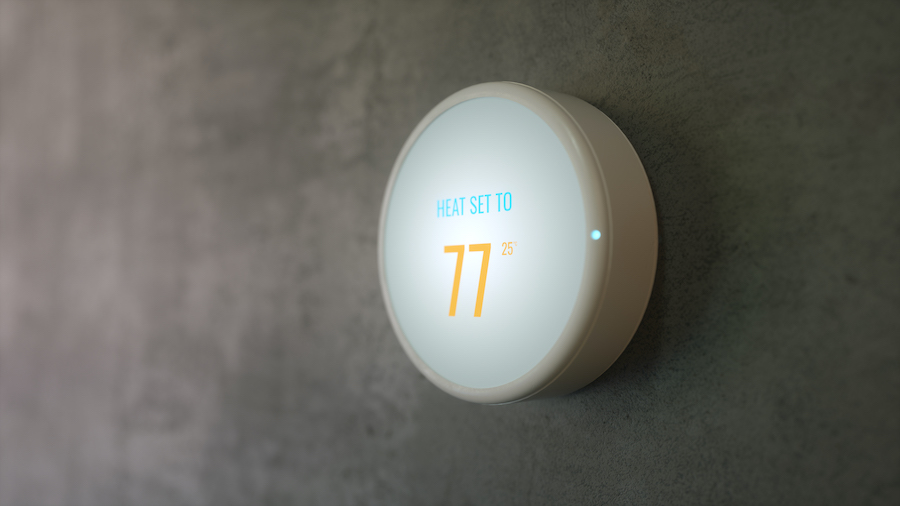HPD started rolling out a new enforcement-type program for Heat Sensors last year. We noticed some violations come through recently – here’s what you need to know if your building is included this year, or in future years:
- What is the Heat Sensors program?
- How are properties selected for the program?
- What happens if my property is included in the program?
- What are tenants responsible for?
- What violations are associated with this program?
- How does my property get discharged from the program?
- Where can I get more details about the program?
What is the heat sensors program?
Local Law 18 of 2020 established a new “heat sensors program” for HPD.
Every 2 years, 50 Class A multiple dwellings will be selected to participate in the program. If selected, teams will have to install internet-capable temperature recording devices (aka heat sensors) into tenant living spaces by October 1st of the selection year.
Per the city, “Heat sensors can measure indoor air temperature and recording such temperature, along with the date and time of such reading. With the installation of heat sensors, such information will be accessible to property owners and tenants of the units in which the sensors are placed.”
How are properties selected for the program?
Buildings are selected for inclusion based on the number of heat violations issued over the preceding 2 years, and whether or not HPD “has received heat complaints for more than one dwelling unit” at the property.
The first group of properties was selected by July 1, 2020. Going forward, a new group of properties will be selected every two years no later than July 1st (with the next group set for July 1, 2022).
Here’s a full list of properties in NYC selected for the first year of the program.
What happens if my property is included in the program?
After receiving notice of inclusion from HPD, owners must inform their tenants about the program within 15 days. Owners must post a sign on the property’s main entrance door (or another conspicuous location in a common area) stating the following details in English and Spanish:
- The building has been selected for installation of heat sensors.
- The requirements of the law including installation of heat sensors.
- The instructions on how to access the information collected by heat sensors.
- The tenant’s right of refusal of installation of a heat sensor in his or her unit.
Here’s a sample notice stating the above in English, and in Spanish.
Following that, owners must provide and install one heat sensor in one living room of each dwelling unit in the selected building by October 1st of the notification year.
Owners must also do the following:
- Replace sensors that are stolen, removed, found missing, or rendered inoperable during a prior occupancy within a unit that wasn’t replaced before the start of the current occupancy
- Replace sensors within 30 days “after the receipt of written notice provided by the tenant of the dwelling unit where such sensor is located that it has become inoperable due to a defect in the manufacture or installation of the sensor and through no fault of the tenant.”
- Maintain records for the installation & maintenance of the heat sensors, and collection of data from heat sensors
- Make said records available to HPD upon notice – here’s a sample document for program recordkeeping
- Maintain records of attempts to access the unit (“reasonable efforts”) to install heat sensors where the owner is unable to gain access, and the tenant has not refused the installation in writing
- Maintain a written record identifying each dwelling unit for which the tenant has refused installation of a heat sensor. Records must be kept for not less than one year after such owner is no longer subject to the provisions of the law.
Finally, owners can’t charge tenants for the acquisition or installation of heat sensors, nor for replacements due to “wear or malfunction.”
What are tenants responsible for?
If they don’t want a sensor in their unit, tenants can opt-out of the program in writing. Here are acknowledgement/opt-out forms in English and Spanish.
Tenants are notified of the following per the form:
If the heat sensor is installed in your dwelling unit, you must not damage it, turn it off, or otherwise make it inoperable. If the heat sensor is stolen, removed, found missing, or is made inoperable by you during your lease term, the owner may replace the heat sensor and charge you a maximum of $50.00 for its replacement.
What violations are associated with this program?
Recently, some Class B HPD violations have been issued for failure to install heat sensors/comply with the program. These violations may also carry housing court penalties of $25 – $100 each, plus $10 per violation per day.
General heat violations can also still be issued to buildings in this program. Daily fines for heat violations may range from $250/day – $1,000/day, so it’s imperative they’re resolved as quickly as possible – oftentimes within 24 hours of posting to avoid these steep penalties.
In fact, HPD will conduct unprompted inspections (not stemming from complaints) “at least once every two weeks in buildings that are selected for participation…for compliance with the heat requirements.” If HPD finds continued compliance by January 31st (around mid-heat season), they may discontinue these checks.
Additionally, HPD may impose inspection fees of $200 if “a third or subsequent inspection within a heat season results in a third or subsequent heat violation and if a third or subsequent inspection within a calendar year results in a third or subsequent hot water violation.” This is the three strikes rule.
As a reminder, heating violations can be issued during heat season (October 1 – May 31st) while hot water must be provided year-round.
How does my property get discharged from the program?
Once selected, owners must follow the program’s requirements for four years.
Owners may apply for discharge before that time based on certain circumstances – including if they have taken permanent action to address the provision of heat for the next season, or if the property hasn’t received any heat-related violations in the immediately preceding heat season.
You can find the Owner’s Request for Discharge Form here.
Where can I get more details about the program?
You can visit HPD’s summary page about the program, and download any associated documents, right here. Of course, don’t hesitate to reach out to support@sitecompli.com if you have questions, or would like to set up InCheck workflows to track installation & monitoring of heat sensor devices.




